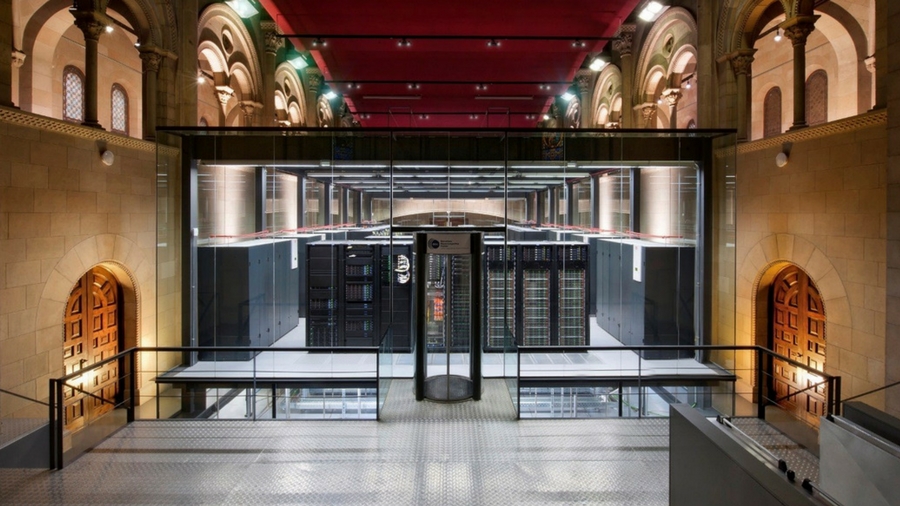Data center industry outlook – key trends for 2017
Compared to 2016, nearly 75 percent of companies’ data centre budgets have increased or stayed consistent this year.

Even as the majority of IT organizations are moving some of their workloads to the cloud, the percentage of workloads residing in enterprise-owned/operated data centers has remained stable at 65 percent since 2014.
That’s a key finding of Uptime Institute’s seventh annual Data Center Industry Survey, which examines the major trends and developments shaping today’s IT infrastructure industry.
The takeaway is that with the explosive growth in business-critical applications and data, enterprises continue to see the data center as not just important, but essential to their digital-centric strategies.
Uptime Institute has long argued that a hybrid data center strategy would be the most likely path taken by a majority of enterprises, which is reflected in the survey: a majority of respondents are in the process of identifying or moving certain applications off-premises.
However, the results also suggest that business and mission critical applications may not be moving off-premises as fast as some in the industry have speculated.
The move by enterprises toward hybrid data center environments, with workload deployments spread across on-premises, colocation, and public cloud facilities, is ongoing.
We believe most large enterprises with large legacy IT investments will continue to run ‘critical’ workloads in high-redundancy premium facilities, oftentimes their own, for the foreseeable future.
Are you a pro? Subscribe to our newsletter
Sign up to the TechRadar Pro newsletter to get all the top news, opinion, features and guidance your business needs to succeed!
By competing for workloads with public cloud and colocation providers the requirement for enterprise operators to be more efficient and maintain high availability has never been greater. And that may mean enterprises need to upgrade facilities or consider emerging technologies.
Data center budgets remain strong in 2017
Compared to 2016, nearly 75 percent of companies’ data center budgets have increased or stayed consistent this year. In fact, half of enterprise IT organizations are upgrading facility infrastructure.
Data centers are typically designed for a 15-20-year life cycle with a building management system (BMS) chosen up-front in the design phase. Aging BMS systems are struggling to keep up with new data center technologies and are creating a challenge for over half of the survey’s respondents.
Upgrading a data center BMS is complex and has its risks. Nonetheless, 60 percent of respondents are up for the challenge and are planning to upgrade their BMS, while 32 percent will simply maintain their legacy systems (for as long as possible). We believe this suggests an opportunity to implement a combined BMS and DCIM solution.
A second idea is to upgrade the cooling system (typically from an aging chiller design).
Two-thirds of the respondents are planning to either upgrade to new cooling technologies (including economization, adiabatic cooling and heat wheels) or refresh their existing system with updated chiller equipment – with responses split about evenly between the two. The remaining third plan to simply ride it out with their existing chillers.
Other emerging technologies that were surveyed included Lithium ion batteries. Anecdotally, concerns surrounding Lithium-ion batteries in a data center remain relatively high for data center operators and managers.
Nonetheless, the Uptime survey shows 10 percent of organizations have installed Lithium-ion batteries and 26 percent were considering them.
Most geographic regions had mid- to high-single digit percentage adoption rates, while Africa and the Middle East stood out at 35 percent adoption. The survey results suggest positive traction for this emerging technology.
However, 64 percent of respondents answered that they were not considering it, so there is still some work to be done by data center suppliers to assuage operator concerns about the (perceived) risks.
There is growing interest in power generation on-site, reflecting a desire to reduce dependency on the power grid. Given the importance of data center availability, improving energy management systems and the massive (and increasing) size of some hyperscale data centers, technologies such as on-site power generation are moving to the forefront.
The installation of on-site power generation is well above 10 percent across all geographic regions (Russia and CIS was the highest at 33 percent) and is being deployed by 21 percent of the entire Uptime survey pool. An additional 22 percent of respondents are considering deployment.
There seems to be less interest in Europe and the UK due to the availability and sustainability built into the electric grid in this region.
Downtime and resilience matter
One-quarter of companies experienced an unplanned data center outage in the last year. Notably, members of the Uptime Institute Network experienced half as many instances, which speaks to the value of sharing expertise with peers and experts; and of disciplined maintenance and operations (M&O).
When an outage occurs, most organizations (90 percent) conduct root cause analysis, but only 60 percent report that they measure the cost of downtime as a business metric.
Therefore, while most operators are learning how to better avoid future downtime by using root cause analysis to improve operating procedures, many are very likely underestimating the business (not just economic) impact of downtime.
Unexpected outages remain a top concern as only 8 percent of respondents believe that their company management was less concerned about IT outages from a year ago.
Most companies surveyed (68 percent) claim to deploy a multi-site, software-based IT resiliency strategy that is capable of live workload failovers. This number, we believe, does not necessarily mean synchronized, seamless failover, but may involve a number of strategies, including disaster recovery-as-a-service and some forms of remove back-up.
Despite this resiliency trend, 73 percent of respondents anticipate continued investment to ensure high availability and physical redundancy in owned data centers; criteria that remains critical to their IT infrastructure (as opposed to transitioning to lower availability and less redundant data centers).
Key decision-making regarding resiliency strategies lies undeniably with the IT team (83 percent of respondents).
The same percentage of organizations deploying a multi-site IT resiliency strategy (68 percent) are highly confident their strategy will work as expected in the case of an outage. Alternatively, 31 percent of respondents were not entirely confident with their resiliency strategy (while 1 percent responded with no confidence).
Critical to any resiliency strategy is going to be the balance of legacy applications versus cloud-native applications. Many legacy critical applications are not written to comply with the requirements of software-based resiliency environment and it may not be feasible to re-architect these applications.
The seventh annual Uptime Institute Data Center Industry Survey was conducted via email in early 2017 and includes perspectives from more than 1,000 data center professionals and IT practitioners across the globe.
- Matt Stansberry, Uptime Institute
- Jeffrey Fidacaro, 451 Research
- Check out the best dedicated servers
Matt Stansberry is the Uptime Institute Senior Director of Content & Publications and Program Director for Uptime Institute Symposium. He has researched the convergence of technology, facility management, and energy issues in the data centre since 2003. Stansberry is also responsible for the annual data centre survey, and develops the agenda for Uptime Institute industry events including Symposium and Charrette.
